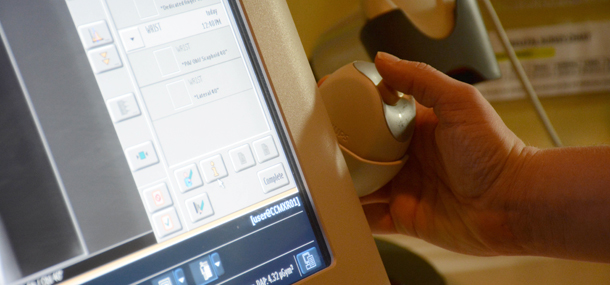

As a radiology technologist, one of the most common questions asked of me is, “Don’t you just push a button?”
My answer? Yes, I do push a button, but I went through two years of schooling that involved learning the inner workings of the human body and the x-ray camera before I could acquire a license to push that button.
While there are some bachelor degree programs out there regarding Radiologic Sciences, most are two-year programs. These programs not only entail intense classroom lectures, but also clinical rotations that require students to perform the specific radiology exams used in hospital settings. We must complete approximately 1,200 hours of practice during our clinical rotations.
As radiology technologists, it’s our job to determine how much radiation is necessary to take a specific x-ray. There are many factors that determine the amount of the radiation required. For example, a newborn chest x-ray requires much less radiation than a 10-year-old’s chest. If too much radiation is used, the picture will appear too dark. Not using enough radiation will result in the anatomy being too light. Size DOES matter when it comes to radiation. Once we measure your child, we enter the size range into the x-ray machine to ensure that we use just the right amount. Although no amount of radiation is good for the human body, the benefit will always outweigh the risk of not having an x-ray when needed.

Correct positioning of your child is also critical in acquiring an x-ray. The slightest change in position can ultimately change a diagnosis. The radiologists depend on the expertise of radiologic technologists to perform exams that produce the clearest pictures.
I have been a radiologic technologist for more than 15 years. Working in this field is very rewarding. For me, being a radiologic technologist is just the right amount of patient care, and, as you can see, I do quite a bit more than just push a button!
Written by Beth Weisman (RT) and edited by Sarah Kaupp.